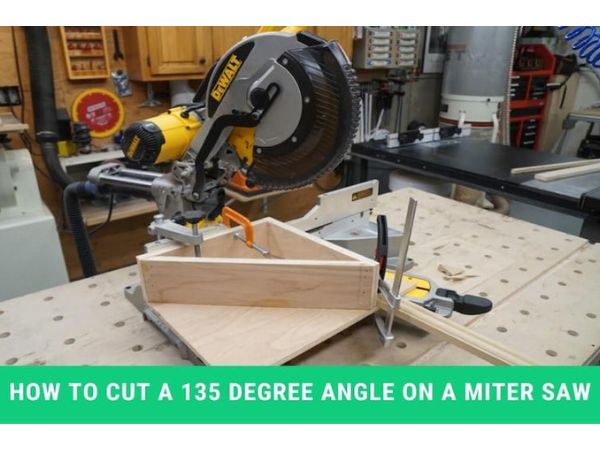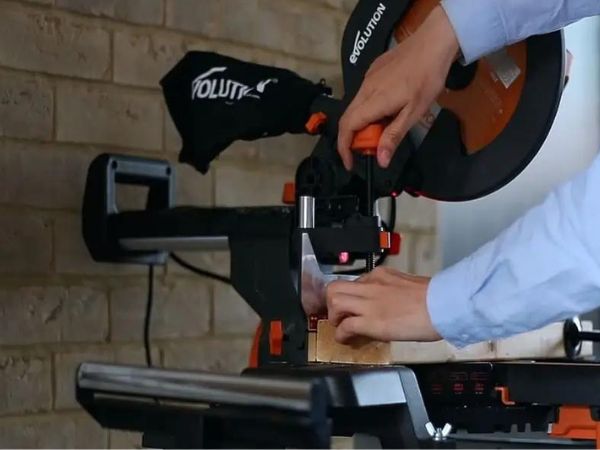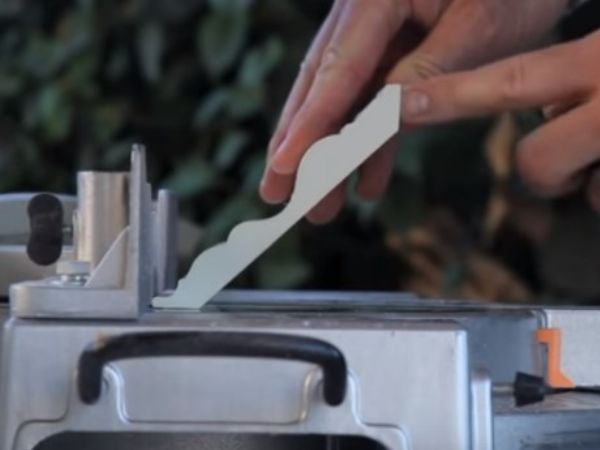How To Cut A 135 Degree Angle With A Miter Saw? Step By Step Process 2023

Auto Amazon Links: No products found.
Cutting a precise 135-degree angle with a miter saw might seem like a daunting task, but with the right knowledge and techniques, it’s an achievable skill for any woodworker or DIY enthusiast. In this guide, we’ll walk you through the step-by-step process of mastering this art, How To Cut A 135 Degree Angle With A Miter Saw? Let’s get started.
Contents
- 1 Understanding Miter Saws
- 2 Safety Precautions Before You Begin
- 3 Choosing the Right Miter Saw Blade
- 4 Setting Up Your Work Area
- 5 Measuring and Marking Your Material
- 6 Adjusting the Miter Angle
- 7 Setting the Bevel Angle
- 8 Making a Test Cut
- 9 Fine-Tuning Your Angles
- 10 Cutting External 135-degree Angles
- 11 Cutting Internal 135-degree Angles
- 12 Tips for Perfect Cuts
- 13 Dealing with Common Mistakes
- 14 Using Clamps and Jigs
- 15 Maintaining Your Miter Saw
- 16 Other Tools for Precision
- 17 Safety Gear and Personal Protection
- 18 Creative Applications of 135-Degree Angles
- 19 Project Ideas to Practice Your Skills
- 20 Conclusion: Mastering the Art of 135-Degree Cuts
- 21 FAQs (How To Cut A 135 Degree Angle With A Miter Saw?)
Understanding Miter Saws
Before diving into the specifics of cutting a 135-degree angle, it’s crucial to grasp the fundamentals of a miter saw. This versatile power tool is designed for making accurate angled cuts in various materials, primarily wood. It consists of a circular saw blade mounted on an adjustable arm that pivots to create precise angles.
Safety Precautions Before You Begin
Safety should always be your top priority when working with power tools. Before you even think about cutting, ensure you’ve taken the necessary precautions. This includes wearing appropriate safety gear such as safety glasses, ear protection, and a dust mask. Additionally, make sure your miter saw is in good working condition.
Choosing the Right Miter Saw Blade
Selecting the right blade for your miter saw is essential for achieving clean and accurate cuts. For cutting wood at a 135-degree angle, a fine-toothed crosscutting blade is typically the best choice. Make sure the blade is sharp and appropriate for your material to minimize splintering and ensure a smooth finish.

Setting Up Your Work Area
Create a well-organized work area that allows you to move freely and safely. Clear any clutter, ensure adequate lighting, and have a stable work surface. Proper organization will save you time and enhance the precision of your cuts.
Measuring and Marking Your Material
Accurate measurements and markings are the backbone of any successful woodworking project. Use a high-quality measuring tape, square, and pencil to mark your material precisely where you intend to make your cut. Measure twice, cutting once is a golden rule to follow.
Adjusting the Miter Angle
To cut a 135-degree angle, you’ll need to adjust the miter angle of your saw accordingly. Most miter saws have a scale and a miter locking mechanism that allows you to set precise angles. Locate the 135-degree mark on the scale and lock it in place.
Setting the Bevel Angle
In addition to the miter angle, you may also need to adjust the bevel angle of your miter saw. Bevel angles come into play when cutting compound angles. For a 135-degree angle, the bevel angle is usually set to zero degrees.

Making a Test Cut
Before committing to your final piece, it’s wise to make a test cut on a scrap piece of material. This helps ensure that your angles are set correctly and that your saw is cutting accurately. Adjust if needed until you achieve the desired result.
Fine-Tuning Your Angles
Precision is key when cutting 135-degree angles. Take your time to fine-tune the miter and bevel angles if necessary, making slight adjustments until you achieve the perfect fit.
Cutting External 135-degree Angles
Now that your saw is properly configured, it’s time to make your cut. For external 135-degree angles, position your material against the fence of the miter saw and carefully lower the blade to make a clean, accurate cut.
Cutting Internal 135-degree Angles
Internal 135-degree angles require a different approach. You’ll typically need to make two cuts, one at half the angle (67.5 degrees) and the other at the same angle in the opposite direction. This will create a clean internal angle.

Tips for Perfect Cuts
- Maintain a steady hand and a firm grip on the material.
- Let the saw do the work; avoid forcing it through the cut.
- Use a backer board to prevent tear-out on the backside of your material.
- Keep your work area clean to prevent debris from interfering with your cuts.
Dealing with Common Mistakes
Mistakes can happen, even to the most experienced woodworkers. If you make an incorrect cut, don’t panic. You can often salvage the project by making adjustments or using wood filler for minor imperfections.
Using Clamps and Jigs
Clamps and jigs can be invaluable tools for holding your material securely in place, especially when cutting complex angles. Invest in quality clamps and consider building custom jigs for specific projects.
Maintaining Your Miter Saw
Regular maintenance is essential to keep your miter saw in optimal working condition. Clean the saw, check for loose parts, and lubricate moving components as needed.
Other Tools for Precision
While a miter saw is essential for cutting angles, other precision tools like digital angle gauges and protractors can help double-check your work.

Safety Gear and Personal Protection
Always wear safety gear, including safety glasses, ear protection, and a dust mask, to protect yourself from potential hazards while using a miter saw.
Creative Applications of 135-Degree Angles
135-degree angles can add unique design elements to your woodworking projects. Explore creative applications like picture frames, decorative moldings, and more.
Project Ideas to Practice Your Skills
To hone your 135-degree cutting skills, consider taking on specific projects that require this angle. This hands-on experience will help you become a master of the craft.
Conclusion: Mastering the Art of 135-Degree Cuts
With the right knowledge, preparation, and practice, cutting 135-degree angles with a miter saw becomes a manageable task. Remember to prioritize safety, measure accurately, and take your time to fine-tune your angles. As you gain experience, you’ll unlock endless possibilities for incorporating unique angles into your woodworking projects.
FAQs (How To Cut A 135 Degree Angle With A Miter Saw?)
Q1: Can I use any miter saw for cutting 135-degree angles?
A1: Most miter saws can cut angles up to 45 or 50 degrees on either side, which is sufficient for cutting 135-degree angles. However, it’s essential to check your saw’s specifications to ensure it can accommodate this specific angle.
Q2: What types of wood are best for 135-degree angle cuts?
A2: You can cut 135-degree angles in a variety of wood types, including hardwoods like oak and maple, as well as softwoods like pine and cedar. The key is using the appropriate blade for your chosen wood to achieve clean cuts.
Q3: Can I cut 135-degree angles in materials other than wood?
A3: Yes, miter saws can be used to cut 135-degree angles in materials like plastic, PVC, and even certain metals. Just make sure to use the appropriate blade designed for the specific material you’re working with.
Q4: What’s the difference between an external and internal 135-degree angle cut?
A4: An external 135-degree angle cut is made on the outside edge of your material, while an internal cut is made on the inside edge. Internal cuts often require two separate cuts at half the angle in opposite directions to create the desired angle.
Auto Amazon Links: No products found.
Auto Amazon Links: No products found.





